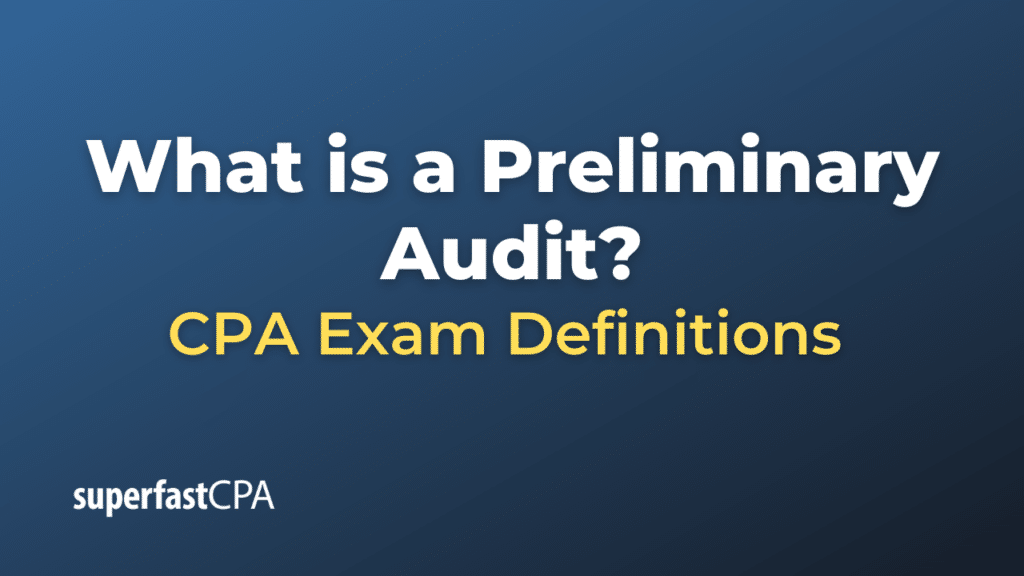Preliminary Audit
A preliminary audit, also known as a preliminary audit engagement or a planning phase audit, is an initial stage in the auditing process where the auditor performs various tasks and procedures to gain an understanding of the client’s business, its industry, and the internal control systems in place.
The aim is to assess the risk of material misstatement (whether due to error or fraud), plan the scope of the audit, and determine the nature, timing, and extent of audit procedures that will be carried out in the subsequent stages of the audit.
The preliminary audit generally includes the following tasks:
- Understanding the Client and Its Environment: This involves reviewing the client’s business operations, its organization structure, the industry in which it operates, the regulatory framework it is subject to, and its financial performance.
- Assessing the Internal Control System: This includes reviewing the client’s internal control procedures, its information system, and other mechanisms that prevent, detect, and correct errors and fraud.
- Risk Assessment: Based on the understanding of the client and its control system, the auditor assesses the risk of material misstatement in the financial statements. This assessment guides the auditor in determining the areas of the audit to focus on.
- Developing an Audit Plan: Based on the risk assessment, the auditor develops a detailed audit plan that outlines the nature, timing, and extent of audit procedures to be carried out.
- Communicating with the Client: This involves discussing with the client about the scope of the audit, the areas of focus, and other relevant details.
The preliminary audit is a crucial stage in the audit process as it lays the groundwork for the remaining audit work. It allows the auditor to design an effective and efficient audit approach that is tailored to the client’s business and risk profile.
Example of a Preliminary Audit
XYZ Corporation, a public company in the technology sector, has recently hired ABC Auditing Firm to conduct its annual external audit.
- Understanding the Client and Its Environment: First, ABC Auditing Firm conducts a preliminary analysis of XYZ Corporation. They review XYZ’s business model, including its major revenue streams, key cost centers, and market positioning. They also research the technology industry, noting regulatory changes and economic conditions that could impact XYZ Corporation.
- Assessing the Internal Control System: ABC Auditing Firm then assesses the internal control system of XYZ Corporation. They look at processes related to revenue recognition, payroll, inventory management, and financial reporting. They interview key personnel and observe operations to understand these controls better.
- Risk Assessment : ABC Auditing Firm identifies areas where there might be a high risk of material misstatement. Given the nature of XYZ’s business, they decide to focus on revenue recognition from software licenses and inventory valuation for hardware components. These areas, due to their complexity and size, could potentially have a significant impact on the financial statements if misstated.
- Developing an Audit Plan: Based on their risk assessment, ABC Auditing Firm develops an audit plan. This includes detailed testing of revenue recognition and inventory valuation. They also decide to test certain other areas, such as accounts payable and accrued expenses, but with less emphasis compared to revenue and inventory.
- Communicating with the Client: ABC Auditing Firm meets with XYZ’s management team to discuss their preliminary findings, areas of focus, and the overall audit approach. They outline the information and support they will need from XYZ Corporation during the audit.
This is a simplified example. Actual preliminary audits can be more complex and would involve more detailed procedures, especially for larger companies with more complex operations. Additionally, the specifics can vary based on the applicable auditing standards and the auditor’s judgment.













